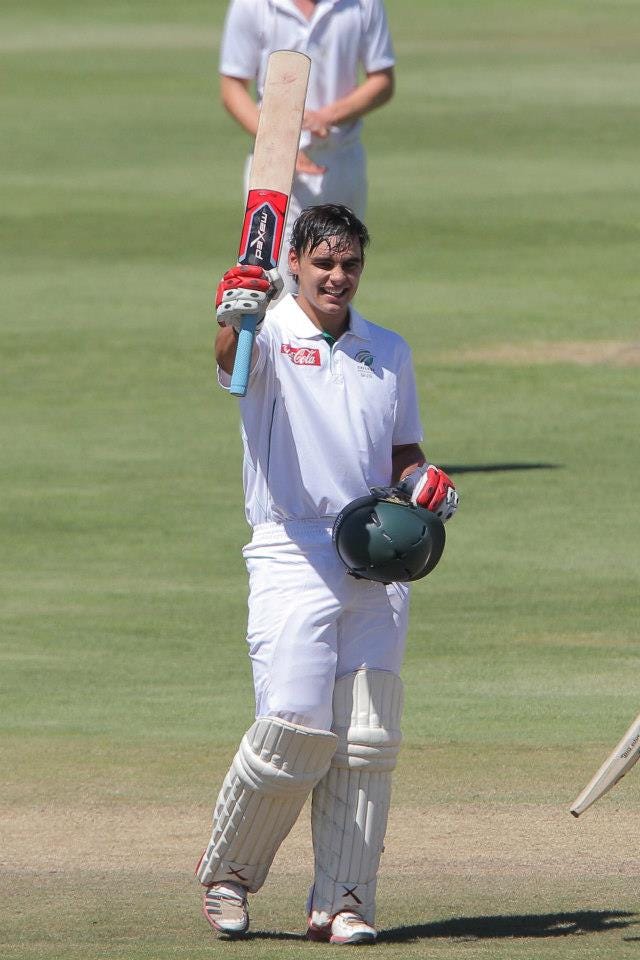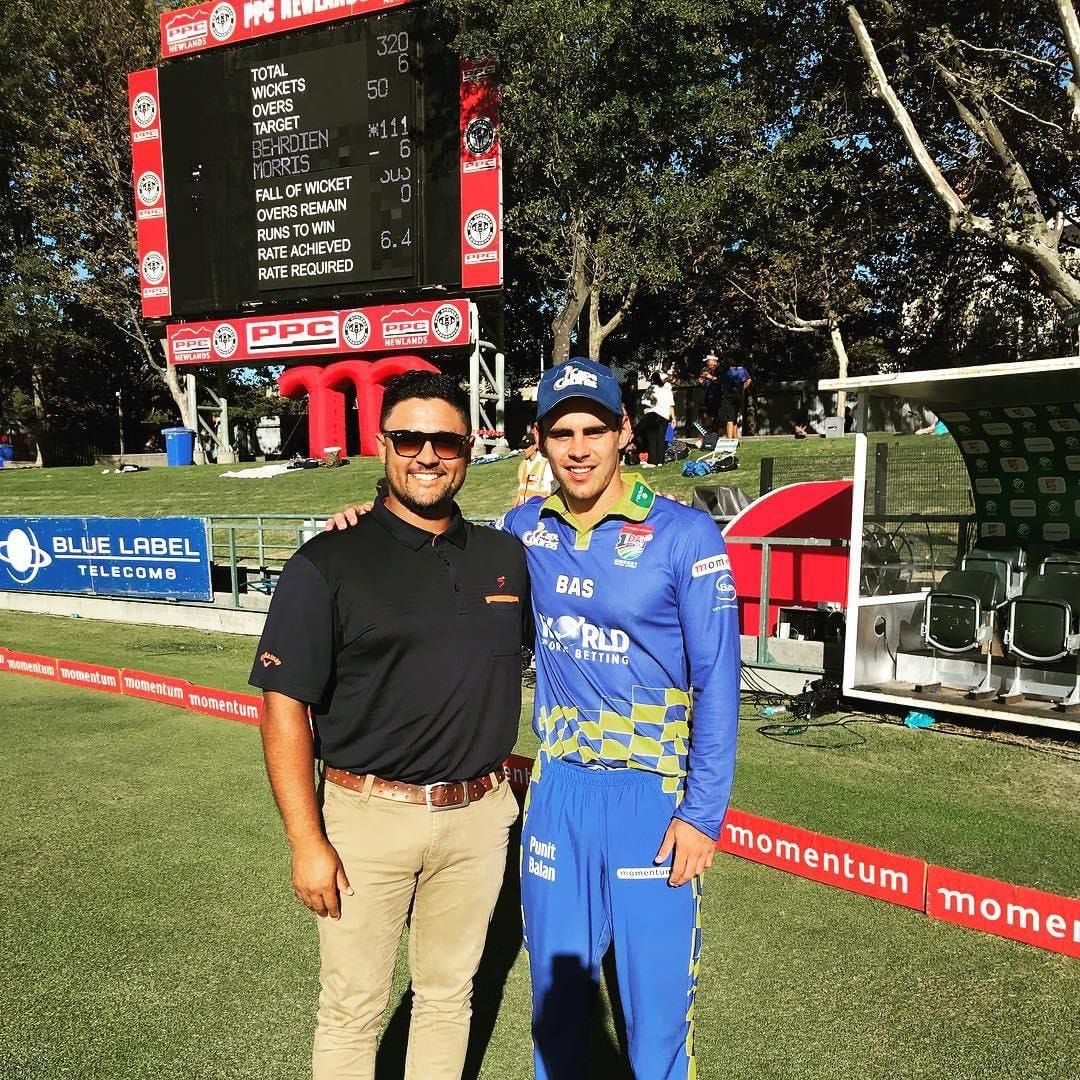The Reconstruction of David
When David Bedingham takes to the field, it's not to take part. His intention is to perform at a higher level.
On 11 December 2017, David Bedingham announced himself to the world as a run-scoring machine. He scored a century in his debut match for Boland. It was the beginning of an unprecedented run. He went on to score five centuries for the club.
Bedingham ended the season as Boland’s leading run-getter and fourth overall with half the matches. He had joined Boland mid-way through the season. His performance caught the eye of Ashwell Prince at Western Province. They offered him a contract at the same time as Boland was offering him his first semi-pro contract.
To celebrate his maiden century, Bedingham raised his bat to acknowledge his teammates in the pavilion. He also saluted the smattering of a crowd littered around the ground. He also silently thanked Ryan Bailey and Grant van Velden.
David Bedingham wanted to play cricket again. He didn’t have illusions about how things would go. He knew things had changed. The doctors had done their best to reconstruct the broken parts of him - the accident had left him with a broken femur, arm and jaw - but he was never going to walk, jog or run the same again. He was never going to hold a bat as he did before.
Bedingham had also changed mentally. He didn’t view the world from the same perspective as he did before. Traumatic experiences like the near-fatal accident he was involved in have a way of altering one’s perspective on life. In December 2016, Bedingham was driving home when he fell asleep at the wheel and crashed into a bakkie in front of him. Five more minutes and he would have made it home safely, but fatigue and the heat got the better of him. “It was really hot on the day of the accident. I think it was like 35 degrees in Stellenbosch,” says Bedingham.
Before the accident, Bedingham had found himself increasingly feeling as if his dream of pursuing a career as a professional cricketer was slowly dying. He was burning the candle at both ends, as his father, John Bedingham, put it. His life lacked balance and it affected his performance on the field. Suddenly the young man who had arrived at Stellenbosch University with a big reputation thanks to a sensational century against England Under-19 couldn’t hit the ball off the square.
In matches, Bedingham showed sparks of class, and hints of otherworldly ability before falling for sub-20 scores. It didn’t help that the more he failed on the field, the harder he was on himself.
“He wasn’t in the right mindset to apply himself,” says Grant van Velden, the head of High Performance at Maties Cricket. But, after the accident, Bedingham was a different person. He seemed more focused and re-energised. “It was as if the accident woke up something in him. Something that made him realise that you don’t want to waste your talents.”
“David’s turning point, psychologically, was his car accident. He came back a more mature man that had a purpose in life,” agrees Ryan Bailey.
This newsletter is completely reader-supported. If you’re willing and able, please consider supporting it in one of two ways, leaving a tip or becoming a Patreon. Thank you so much for your time and investment.
Bedingham’s recovery took a long time. It was months before he could stand on his own and even longer for him to walk. One of the first things Bedingham did when he could move around was get in touch with van Velden and Ryan Bailey. He needed help rebuilding his game.
Using the information they had on Bedingham on record, the van Velden and the Maties team drafted a program for Bedingham. The program was divided into four sections: return to train in the gym, return to train in the field, return to play, and return to perform. The idea was to get him as close to his former strength as possible.
Three times a week, Bedingham was at the Stellenbosch University gym by 5:45 am. Bedingham worked with Grant van Velden, the Maties’ head of high-performance, to strengthen his leg from 6 am. “At first it was basic movements on the leg press, leg extension. I carried very low weights just to try and slowly get all the range back,” says Bedingham.
Van Velden spent the first 10 to 12 weeks of Bedingham’s return to the gym working with him on building Bedingham’s lower body strength. “The femur is the strongest bone in the body and when it’s broken, a lot of work goes into rehabilitating it. But, we did not just focus on the injured femur, we had to do work on the hamstrings, adapters, calves and glutes,” says van Velden.
Bedingham had lessons at 8 am. After his lessons, he hobbled to the nets where he met with Ryan Bailey. Bailey threw balls for Bedingham until one of two things happened: either Bailey had to go and work with other players or Bedingham got tired. Bedingham never got tired. He wanted to hit balls all day. “Ryan Bailey threw thousands of balls for me when he really didn’t have to,” says Bedingham.
Bailey saw it differently. He saw how badly Bedingham yearned to be back on the field and how hard he was working on his fitness. The net sessions were a reward to Bedingham for all the work he did in the gym. And there was also a practical aspect to it, “It was also a transitional period to build his capacity, just making sure he was strong enough to hit balls. So it was just hitting balls with no technical or tactical stuff,” says Bailey.
Simply hitting balls, day in and day out, can devolve into groundhog day. It is easy for players to get bored. Bailey understood Bedingham. They had been working together for a while. They first met at a club training session. Bailey had been drawn to Bedingham because of his clean ball striking. They developed a relationship on the spot. He knew that the monotony would bore Bedingham to death.
“I had to challenge him mentally during practice. Set out scenarios to encourage critical thinking. I would set goals and incentivise reaching milestones,” says Bailey.
As part of the return to training in the field, which came about four months after training in the gym, van Velden introduced jogging to Bedingham’s training. After a couple of weeks, Bedingham was sprinting in a straight line. As he grew stronger, Bedingham had to change direction while sprinting. It was also around this time that Bailey moved from the basics of batting to the more technical aspects.
From day one of gym training, Bedingham had his eye on playing for Boland during the 2017/18 season when he approached van Velden and Bailey. Bedingham spoke about it constantly and pushed hard to get match-fit by October. In September, Bedingham was training in the field and investing a lot of energy into convincing Bailey that he was ready to play.
Each time Bedingham said he was ready, Bailey ran fitness tests and put his injured leg under stress to see how it would hold up. The next day, Bailey would test to see if Bedingham’s leg was still holding up and if he could move pain-free, free of discomfort. Bedingham did his best to hide the pain and discomfort, but Bailey saw through it. Bailey turned down Bedingham’s request for clearance each time. He wasn’t ready yet.
“He wasn’t moving as freely as he should have been. I would give the report to the physios and biokeniticists and they agreed he was not ready,” says Bailey.
Being turned down was frustrating to Bedingham. It tested his relationships with Bailey and van Velden, tested his patience and tested his will and commitment to the program. When the going got tough while working on strengthening his leg, van Velden always reminded Bedingham that ‘the comeback is always greater than the setback.’ The mantra helped Bedingham find strength when he felt overwhelmed, frustrated or tired.
“Looking back, Bailey delaying my return was the best thing for me as I was hungrier than ever when I eventually got playing again and going back too early might have meant another injury,” says Bedingham.
After pushing for months, Bedingham was finally cleared in the first week of December 2017, and on the 11th, 360 days after his accident, more than a year after his last match, he played his first match.
Bedingham marked his return to cricket with a century. “It was on a very bumpy field which made running and fielding pretty risky because my leg was still not completely perfect,” says Bedingham. Despite the state of the field, Bedingham didn’t hold back. He was determined to show everyone that he wasn’t back to take part, he was back to perform at a higher level.
If you found this interesting, please share it:
You can support Stumped! by leaving a tip:
Thanks for reading. Until next time… - CS







